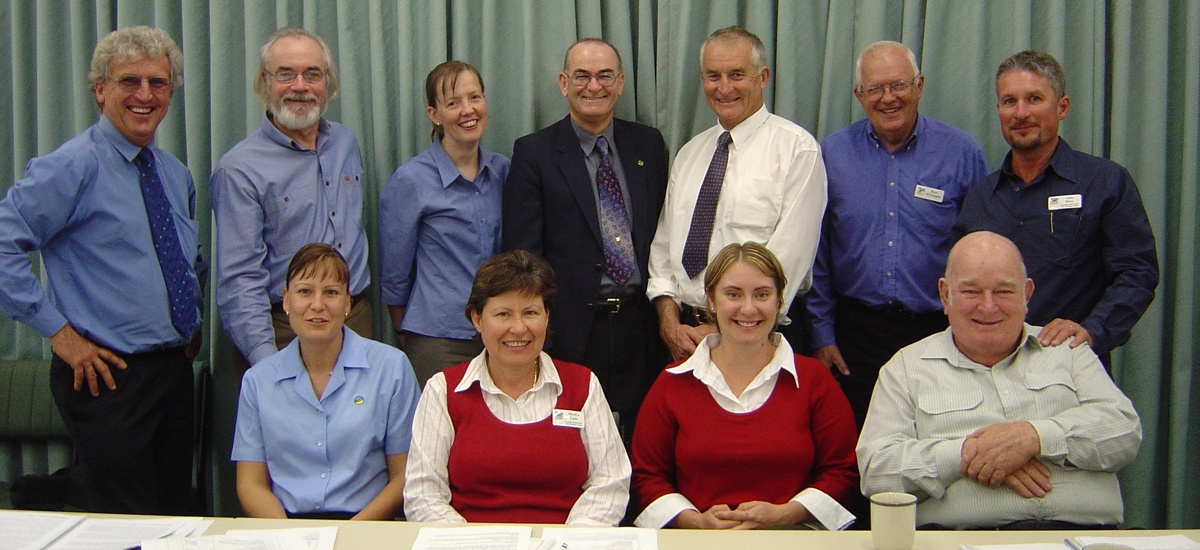
The first regional group initiative for the management of natural resources in Western Australia was the Swan-Avon Integrated Catchment Management (ICM) Group. The Swan-Avon ICM began in 1994. The Avon Working Group was responsible for developing the ICM which was responsible for the 12,000,000 Ha which make up the Avon Catchment region. The Swan-Avon ICM was a non-statutory body. The five major principles of integrated catchment management (from “Swan-Avon ICM program“ ‘Regional Initiative’” prepared by The Swan Avon ICM Program Agency Working Group in cooperation with Regional Community Groups.) are:
1. Whole catchment co-ordination (inclusive of off-site effects)
2. Sustainable land and water use
3. Protection for natural ecosystems and biological diversity
4. Co-operative community planning and involvement at the local level
5. Improved community well-being through economic development.
The Avon Working Group, incorporated on the 18 April 1997, was a partnership between State/Australian governments and the community of the Avon River Basin. The Avon Working Group (AWG) was a body that consisted of nine community representatives from the Yilgarn, Lockhart and Avon Catchments who came from catchment groups and the farming community. Senior members of state government agencies were also representatives on this group including Wheatbelt Development Commission, Water and Rivers Commission, the Department of Conservation and Land Management, and Agriculture Western Australia. The Avon River Management Authority was also represented. The Vision of the Avon Working Group (AWG) was: That regional prospects for present and future generations are improved through sustainable use, enhancement and conservation of natural resources. The Avon Catchment Network was also formed in 1997, under the direction of Mr Viv Read. Its purpose was to be primarily an information provider, with a mission “to ensure the communities of the Avon Basin has access to information and ideas they need to manage natural resources and achieve sustainable development.”
The initial members of the AWG were:
- Mike McFarlane from Doodlakine and Chairman of the Group
- Ben Davey from Wongan Hills
- Noela Maitland from Wyalkatchem
- Kennedy Miller from Narembeen
- Darralyn Ebsary from Corrigin
- Graeme Blight from Beverley
- Grant Arthur from the Wheatbelt Development Commission
- Doug Morgan from the Avon River Management Authority
- Murray McGregor from Muresk
- Darrel Brewin from Agriculture Western Australia
- Viv Read from the Water and Rivers Commission
- Ken Wallace from the Department of Conservation and Land Management.
The Decade of Landcare (1989-1999) was declared in 1989. The Decade of Landcare arose from a joint National farmers’ Federation—Australian Conservation Foundation proposal to the Commonwealth for action over land degradation. Its vision was: Development and implementation of resource management practices which enhance our soil, water and biological resources and sustain individual and community benefits now and in the future.
The Natural Heritage Trust (NHT) was set up by the Australian Government in 1997 to help restore and conserve Australia's environment and natural resources. As a result of this initiative, considerable numbers of community groups and organisations have received funding for environmental and natural resource management projects.
The NHT provided funding for environmental activities at a:
- community level (through the Australian Government Envirofund)
- regional level
- National/State level
The Avon Working Group undertook a wide range of activities in this time frame, particularly under the Dryland Salinity Program. One key program was the development of the first Natural Resource Management Strategic plan (2001) as a result of extensive consultation with the Avon Community and Government. The Group changed its name to Avon Catchment Council on 20 March 2002, as the name “Working Group” was perceived as too temporary. It also brought its name into alignment with other catchments. In order to manage the delivery of funds, the Federal Government divided Australia into 56 natural resource management (NRM) groups. The Avon Catchment Council was designated a Regional Group, responsible for developing a regional NRM strategy for the Avon Basin. These NRM Strategies were accredited by the Australian Government to guide investment in each region. These were funded through the National Action Plan for Salinity and Water Quality and the second round of Natural Heritage Trust funding. The period (2005-2008) saw a focus on large scale strategic projects targeting high-value public assets, such as the Avon River and its pools.
The Natural Heritage Trust ceased to operate on 30 June 2008. Its function was included in the work of the 'Caring for our Country' funding program. The Australian Government Caring for our Country (CFOC) program began in 2009. The Avon Catchment Council changed its name to Wheatbelt Natural Resource Management (NRM) Incorporated on 27 July 2009. This reflected the geographical location and common interests and land uses of the community within the Avon River Basin region. The Caring for our Country program uses a business planning model to deliver Australian Government priorities. Wheatbelt NRM’s challenge was to understand the context of its own strategy within the higher-level initiatives of the Australian and State Governments. Wheatbelt NRM’s 2010–12 Strategic Plan marked a new way forward for the engagement with the community and a new way of doing business.
This period saw the organisation undergo major governance reform that included establishment of a skills-based Board of Management. Currently, Wheatbelt NRM operates under the 2012–2015 Strategic Plan. The previous regional strategy was implemented in 2005. Currently, the Regional strategy has been rewritten and is available for comment here (HL). Wheatbelt NRM continues to grow, and has been successful in gaining funding in the second round of CFOC in the following areas:
- Trialling and demonstrating farmer innovation for improved environmental and resource management
- Optimising nutrient management for soil health and agricultural production
- Building Aboriginal Land Manager NRM Capacity in the Avon Region
- Building community capacity and participation through the delivery of a Regional Landcare Facilitator
- Conserving and enhancing Eucalypt Woodlands of the Western Australian Wheatbelt and priority assets under threat.
- Building Aboriginal community capacity for natural conservation in the Avon region

